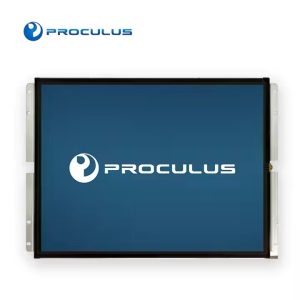Understanding TFT Technology: Transforming Display Technology
In today’s rapidly evolving technological landscape, displays play a pivotal role in our everyday lives. Whether it’s our smartphones, tablets, or computer monitors, we are surrounded by screens that deliver information and visual content. Thin-Film Transistor (TFT) technology lies at the heart of these vibrant and high-resolution displays, enabling the stunning visuals and responsiveness we have come to expect. This article aims to introduce and explain the fundamentals of TFT technology, shedding light on its significance in modern display devices.
What is TFT?
TFT, or Thin-Film Transistor, is a type of active-matrix liquid crystal display (LCD) technology that employs a matrix of transistors to control individual pixels on a TFT display panel. Unlike passive-matrix LCDs, TFT technology allows for faster pixel response times, enhanced image quality, and improved color reproduction. This advancement has made TFT displays the preferred choice for various applications, including smartphones, tablets, computer monitors, televisions, and more.
How does TFT work?
At the core of a TFT display lies a thin-film transistor, which is essentially an electronic switch integrated into the structure of each individual pixel. These transistors serve as active elements that control the flow of electrical current through the liquid crystal material. When a voltage is applied to a specific transistor, it turns on, allowing the liquid crystals in that pixel to align in a manner that controls the amount of light passing through.
The array of transistors in a wholesale TFT monitor is arranged in a grid formation, with each transistor corresponding to a single pixel. By selectively activating and deactivating these transistors, the display controller can precisely control the amount of light transmitted by each pixel, resulting in the desired image or video being displayed on the screen.
Advantages of TFT
Enhanced Image Quality: TFT displays offer exceptional image quality with vibrant colors, high contrast ratios, and wide viewing angles. The individual pixel control provided by the transistors ensures accurate representation of colors and eliminates the “ghosting” effect often seen in passive-matrix LCDs.
Faster Response Times: TFT technology enables rapid response times, ensuring smooth transitions between images and reducing motion blur. This makes TFT displays well-suited for gaming, multimedia applications, and other scenarios where fast-paced visuals are crucial.
Versatility: TFT displays are highly versatile, allowing for a wide range of display sizes and resolutions. From compact smartphone screens to large-format televisions, TFT technology can adapt to different sizes while maintaining excellent visual performance.
Energy Efficiency: TFT displays consume less power compared to older technologies, contributing to improved battery life in portable devices. Furthermore, the individual pixel control enables localized dimming, enhancing energy efficiency by reducing backlight bleed.
Applications of TFT
TFT technology finds application in numerous consumer electronics devices, including:
Smartphones and Tablets: TFT displays are widely used in smartphones and tablets, delivering crisp visuals and touch-sensitive capabilities.
Computer Monitors: TFT-based monitors provide high-resolution displays with accurate color reproduction, making them ideal for professional applications such as graphic design and video editing.
Televisions: TFT LCD panels are commonly used in modern televisions, offering immersive viewing experiences with excellent picture quality.
Automotive Displays: TFT displays are integrated into instrument clusters, infotainment systems, and rear-seat entertainment systems in automobiles, providing vital information and entertainment to drivers and passengers.
Conclusion
Thin-Film Transistor (TFT) technology has revolutionized display technology, enabling the creation of high-quality, vibrant, and responsive screens that have become an integral part of our daily lives. With its ability to provide exceptional image quality, fast response times, and energy efficiency, TFT displays have found widespread adoption in smartphones, tablets, monitors.

 English
English


